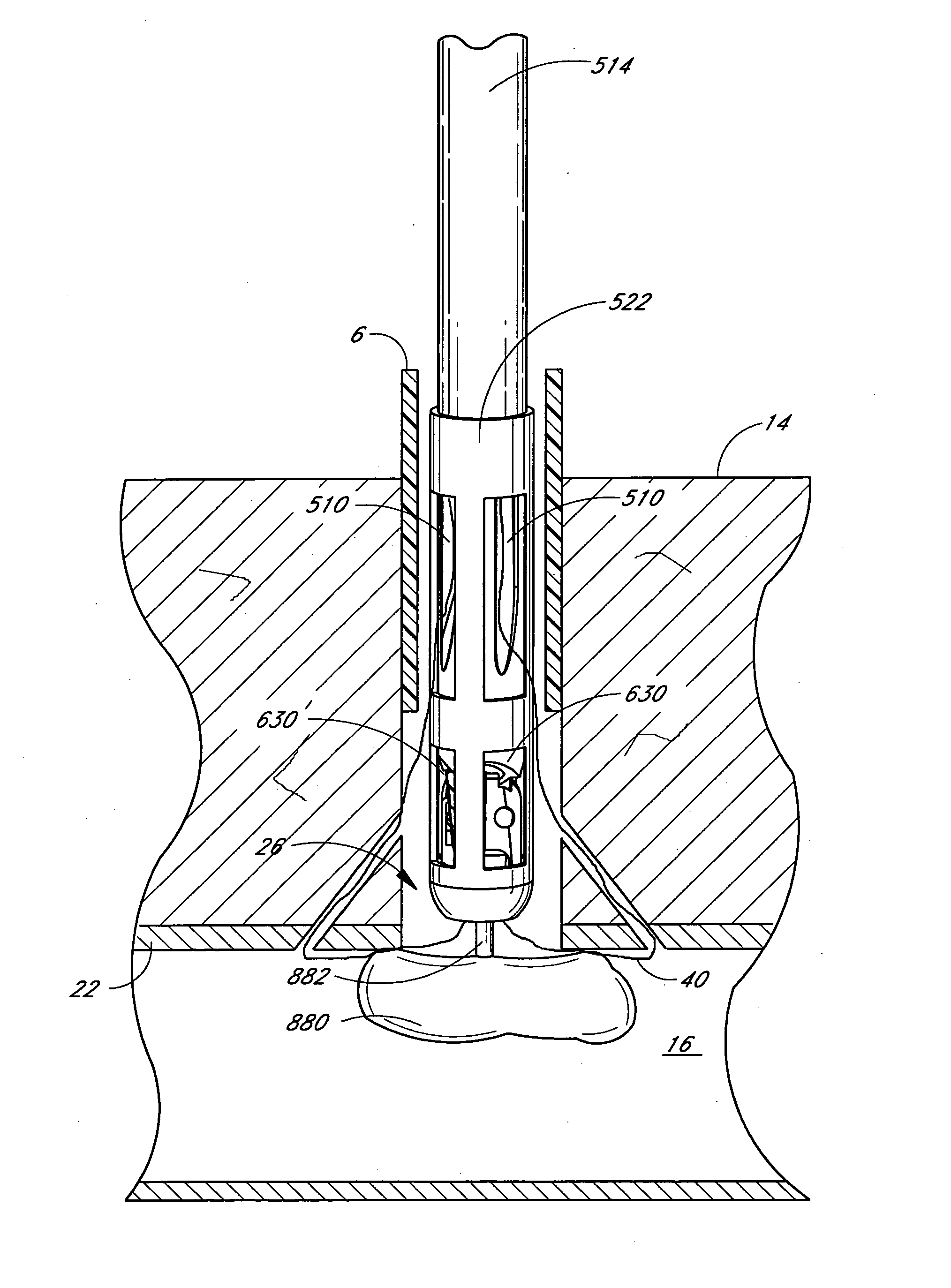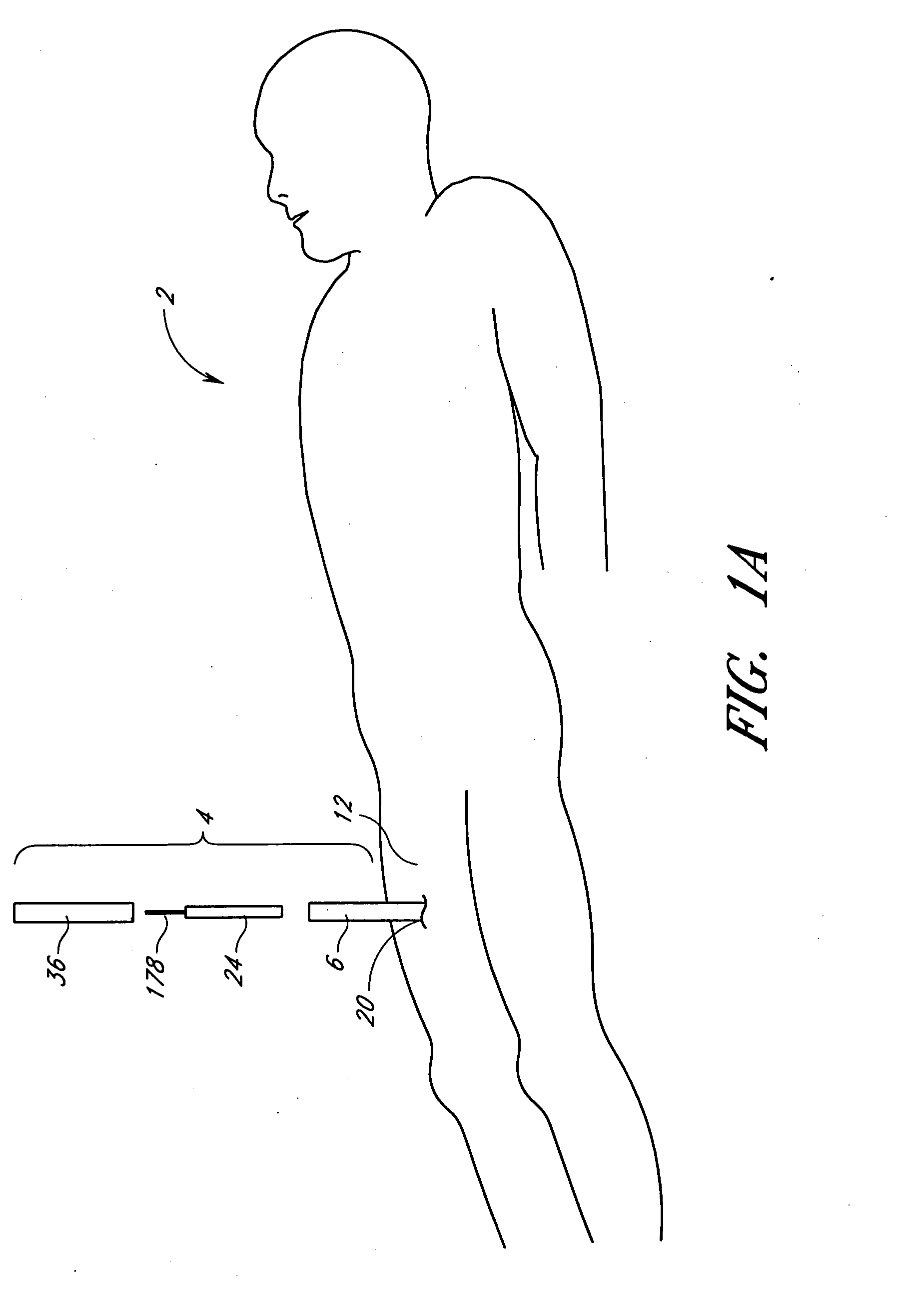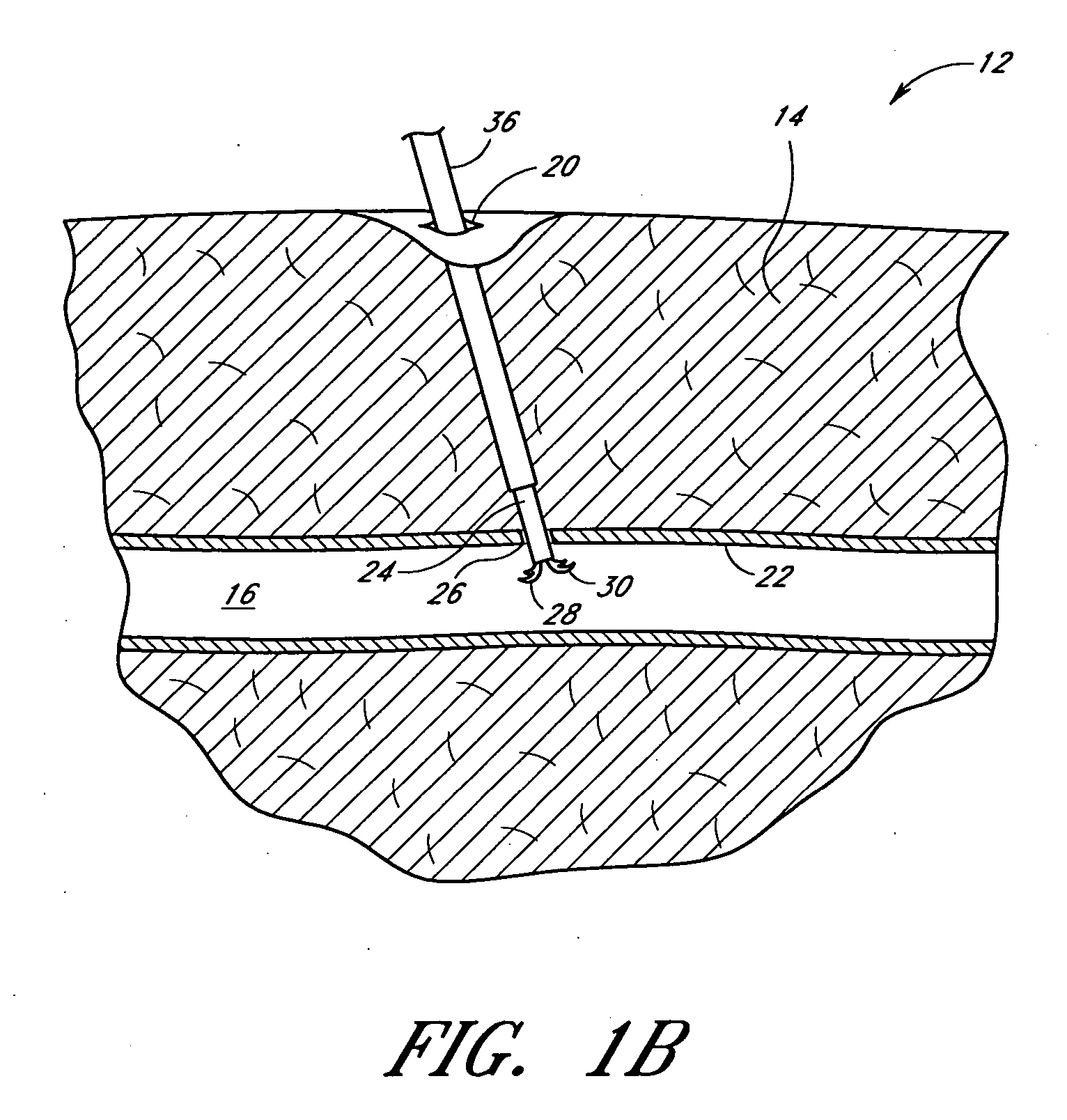Suturing device and method
a suction device and suction tube technology, applied in the field of suction devices, can solve the problems of thrombosis patch rupture or burst, patient bleeding to death, and needing to apply pressure, and achieve the effect of reducing many complications and costs
- Summary
- Abstract
- Description
- Claims
- Application Information
AI Technical Summary
Benefits of technology
Problems solved by technology
Method used
Image
Examples
embodiments
Six-Arm and Eight-Arm Embodiments
[0267]FIGS. 62-65 illustrate another suture device configuration 750. FIG. 62 is a perspective view of the suture device 750 with six suture clasp arms 756-766 (only three of which are visible in FIG. 62). FIG. 63 is a perspective view of the device 750 of FIG. 62 with the suture clasp arms 756-766 fully deployed. FIG. 64 is a perspective view from the distal end of the device 750 of the six suture clasp arms 756-766 of FIG. 62. FIG. 65 is a perspective view of the device of FIG. 62 with the suture clasp arms fully deployed and a set of needles engaging the suture clasp arms.
[0268] In FIG. 62, the structure of the suture introducer head 752 is substantially similar to the suture introducer head 522 of FIG. 52A, except the suture introducer head 752 in FIG. 62 comprises six suture arm apertures 508 and six needle apertures 510. Similarly, the structure of the hollow elongated body 754 in FIG. 62 is substantially similar to the structure of the hollow...
embodiment
Alternate Handle Embodiment
[0309]FIG. 74A is a perspective view of another embodiment of a handle 900 capable of being attached to the proximal end of the device of FIG. 41, the device of FIG. 48 or the device of FIG. 52A. Similarly, FIG. 74B is a perspective view of another embodiment of a handle 900 adapted to separately actuate the first and second needles. A portion of the main housing 910 has been removed in FIGS. 74A and 74B to expose the interior. FIGS. 75A and 75B are exploded, perspective views of the embodiment shown in FIG. 74A. FIG. 76A is an exploded, perspective view of the embodiment shown in FIG. 74B, and FIGS. 76B-D schematically illustrate various embodiments of the needle drivers adapted to separately actuate the first and second needles. FIGS. 74B and 76A-D will be described more fully below in connection with the non-simultaneous actuation of the first and second needles.
[0310] In FIGS. 74A, 75A, and 75B, the handle 900 comprises a thumb ring 902, a plunger 904...
PUM
 Login to View More
Login to View More Abstract
Description
Claims
Application Information
 Login to View More
Login to View More - R&D
- Intellectual Property
- Life Sciences
- Materials
- Tech Scout
- Unparalleled Data Quality
- Higher Quality Content
- 60% Fewer Hallucinations
Browse by: Latest US Patents, China's latest patents, Technical Efficacy Thesaurus, Application Domain, Technology Topic, Popular Technical Reports.
© 2025 PatSnap. All rights reserved.Legal|Privacy policy|Modern Slavery Act Transparency Statement|Sitemap|About US| Contact US: help@patsnap.com



